Sir Stamford Raffles is widely regarded as the founder of modern Singapore. A statesman and a soldier, his exploits in Asia is well documented, and a short blog post does no justice to the man. Suffice to say, modern Singapore owes him a great deal. He was involved in drafting the first constitution in 1823, which among other things outlawed gaming and slavery. Importantly, a specific regulation in the constitution called for the multi-ethnic population of Singapore to remain as is, and there shall be no crimes based on race.
Back to topic, when one normally talk of Raffles and nature, many know of Rafflesia, the plant genus which has the largest single flowers that was named after him.
What is less well known, although it should be is the fact that he was also a naturalist. He was one of the earlier avid collector of the various flora and fauna in the South-east Asian region where he was based. Raffles himself described and published in journals quite a number of mammals and birds that were new to science then.
For birds, these are the species first described by Raffles: Crestless Fireback, Milky Stork, Malayan Night Heron, Great-billed Heron, Red-legged Crake, Black-naped Tern, Mountain Imperial Pigeon, Raffles’s Malkoha, Chestnut-bellied Malkoha, Barred Eagle-Owl, Brown Hawk-Owl, Red-naped Trogon, Black Hornbill, White-crowned Hornbill, Blue-backed Parrot, Green Broadbill, Black-and-yellow Broadbill, Dusky Broadbill, Giant Pitta, Ashy Minivet, Asian Brown Flycatcher, Mangrove Blue Flycatcher, Crimson Sunbird and the Large Woodshrike. There is a debate over the naming of the last species, but altogether there are 24 bird species listed.
More than just being a collector of wildlife, upon his return to England after his distinguished service in South-East Asia, he went on to establish the London Zoo and the Zoological Society of London. In Singapore, the first museum established in 1849 was named Raffles Library and Museum. Subsequently it was renamed the National Museum of Singapore, and the large zoological collection was transferred to the appropriately named Raffles Museum of Biodiversity and Research. Of course, time marches on, and now that name too is gone, replaced with one that commemorate a rubber, sawmill and pineapple tycoon instead.
Below are some photos and short notes of a few birds that Raffles first described.
Photo Gallery
- A male Mangrove Blue Flycatcher (Cyornis rufigastra) at Chek Jawa in 2011. A very rare resident in Singapore.
- An adult Red-legged Crake (Rallina fasciata) at Singapore Botanic Gardens. It is a breeding resident in Singapore.
- A Black-naped Tern (Sterna sumatrana) feeding a recently hatched chick. It likes to breed at the offshore rocks near the mainland.
- A Great-billed Heron (Ardea sumatrana) at one of the Southern Islands. It is considered a rare resident in Singapore.
- Green Broadbill (Calyptomena viridis) at Kaeng Krachan National Park in Thailand. Extinct in Singapore. The subspecies in Thailand is not the same as the one occurring in Indonesia that Raffles obtained, but is included here just as a reference.
- A Dusky Broadbill (Corydon sumatranus) in Panti. Extinct in Singapore.
- A Barred Eagle-Owl (Bubo sumatranus) at a resort in Johor. It is also listed as a rare visitor to Singapore, although exceedingly hard to find.
- A Chestnut-bellied Malkoha (Phaenicophaeus sumatranus) at Jelutong Tower, Singapore. Raffles like to name a few of his birds as sumatranus as there was where the majority of his collection was done. However, there is one bird he named as sumatranus that did not occur in the wild in Sumatra, which is the Black-backed Parrot.
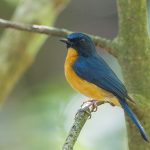
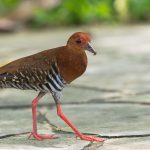
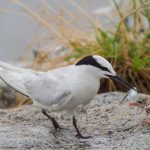
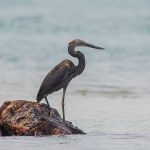
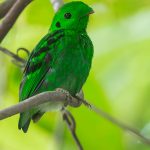

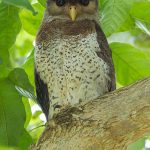
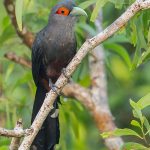
Stunning